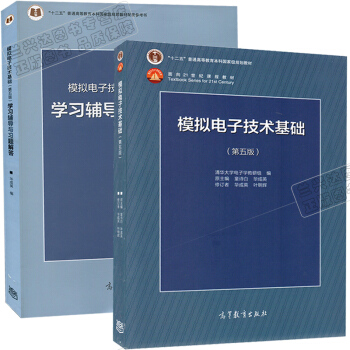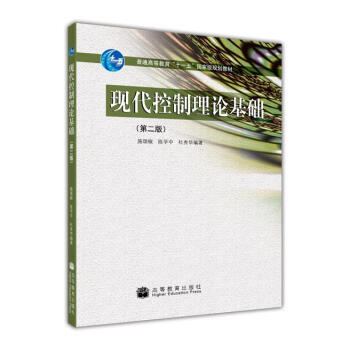

具体描述
编辑推荐
随着中国经济和社会的迅速发展,涉外法律工作的重要性日益突显。十八届四中全会提出加强涉外法律工作;司法部、商务部、外交部和国务院法制办联合印发了《关于发展涉外法律服务业的意见》,对大力发展涉外法律服务业做出全面部署。中国已正式进入了法律服务的全球化时代。“一带一路”国家战略成为国际合作的新平台,其实质是国家的重大涉外经济工程,离不开法律英语的保驾护航。同时,随着高校外语教学改革不断深化,法律英语已成为ESP重要的分支之一,许多高校在外语院系开设了法律英语课程或设置了法律英语方向,收到了良好的社会效果。培养能够适应法律服务国际化要求的复合型涉外法律人才是时代发展的必然需要。该书为基础篇,面向高职院校学生以及从事法律英语专业的相关机构的工作人员。通过《基础法律英语教程》的学习,既能学习以美国为代表的西方法律知识,又可以提高在法律这一特定的领域内的英语读、写、说、译的技能。内容简介
《基础法律英语教程》是全国高等院校法律英语专业统编教材,LEC考试指定教材之一。该书为基础篇,面向高职院校学生以及从事法律英语专业的相关机构的工作人员。通过本教材的学习,既能学习以美国为代表的西方法律知识,又可以提高在法律这一特定的领域内的英语读、写、说、译的技能。此外,本教材还具有以下特点:首先,针对法律英语的初学者,本教材的内容较之其它法律英语教材更为简单和浓缩,容易接受。教材前四章以对话这一日常的语言形式来导入,初步展示了法律英语运用的语言环境和语体,简单介绍了常见的法律关系和法律概念。随后用篇章的形式由浅入深地介绍了法律文化和美国的部门法。在阅读材料的选取中,本教材特别注意选取难度适中的材料,确保绝大多数初学者可以轻松阅读。其次,本教材使用大量的篇章对法律文化进行了介绍,包括法庭礼仪和服饰,遵循先例,律师的职业和道德,普通法和成文法传统,陪审团制度,法院系统,法律教育等,涵盖了美国法律文化的方方面面,有助于初学者对美国法律文化制度的认识形成一个完整的框架。再次,本教材的体系完备。在介绍了法律文化之后,又用十个章节介绍了美国主要的部门法,如宪法,合同法,侵权法,物权法,证据法,知识产权法,刑法,刑事程序法,民事程序法,商法;并且,为满足对外贸易发展的需要,本教材还增加了对WTO制度的介绍。本教材在每章节后面都附有相关的练习题,以帮助学习者检查课堂内容的掌握程度,查漏补缺。
作者简介
张法连,1969年1月生,山东聊城人,中国政法大学外国语学院教授、硕士生导师,并在多所高校兼职博导,全国法律英语学科知名教授。目录
ContentsUNIT 1 REPORTING A CRIME1
UNIT 2 CONSULTING A LAWYER4
UNIT 3 ARBITRATION7
UNIT 4 PLEA BARGAINING11
UNIT 5 CHARACTERISTICS OF LEGAL ENGLISH14
UNIT 6 DOCTRINE OF STARE DECISIS19
UNIT 7 COURT ETIQUETTE AND ATTIRE23
UNIT 8 LEGAL ETHICS27
UNIT 9 CHIEF JUSTICE IN THE UNITED STATES31
UNIT 10 LAWYERS35
UNIT 11 COMMON LAW & CIVIL LAW SYSTEM40
UNIT 12 JURY TRIAL47
UNIT 13 COURT SYSTEM IN THE UNITED STATES53
UNIT 14 SOURCES OF LAW IN THE UNITED STATES58
UNIT 15 SEVEN PRINCIPLES IN THE U.S. JUDICIAL SYSTEM63
UNIT 16 LEGAL PROFESSIONALS IN THE UNITED STATES68
UNIT 17 LEGAL AID IN THE UNITED STATES74
UNIT 18 LEGAL EDUCATION IN THE UNITED STATES81
UNIT 19 WORLD TRADE ORGANIZATION (I)88
UNIT 20 WORLD TRADE ORGANIZATION (II)96
UNIT 21 CONSTITUTIONAL LAW103
UNIT 22 CONTRACTS109
UNIT 23 TORTS116
UNIT 24 PROPERTY LAW123
UNIT 25 EVIDENCE LAW130
UNIT 26 INTELLECTUAL PROPERTY LAW136
UNIT 27 CRIMINAL LAW142
UNIT 28 CRIMINAL PROCEDURE150
UNIT 29 CIVIL PROCEDURE157
UNIT 30 BUSINESS LAW164
KEY TO THE EXERCISES170
APPENDIX A 187
APPENDIX B 194
APPENDIX C 199
精彩书摘
Intellectual Property LawIntellectual property (IP) is a term referring to creations of the intellect for which a
monopoly is assigned to designated owners by law. Some common types of intellectual
property rights (IPR) are trademarks, copyright, patents, industrial design rights, and in
some jurisdictions trade secrets: all these cover music, literature, and other artistic works;
discoveries and inventions; and words, phrases, symbols, and designs.
While intellectual property law has evolved over centuries, it was not until the 19th
century that the term intellectual property began to be used, and not until the late 20th
century that it became commonplace in the majority of the world.
Intellectual Property Rights
Intellectual property rights include patents, copyright, industrial design rights,
trademarks, plant variety rights, trade dress, and in some jurisdictions trade secrets.
1. Patents
A patent is a form of right granted by the government to an inventor, giving the
owner the right to exclude others from making, using, selling, offering to sell, and
importing an invention for a limited period of time, in exchange for the public disclosure
of the invention. An invention is a solution to a specific technological problem, which
may be a product or a process and generally has to fulfill three main requirements: it has
to be new, not obvious and there needs to be an industrial applicability.
2. Copyright
A copyright gives the creator of original work exclusive rights to it, usually for a
limited time. Copyright may apply to a wide range of creative, intellectual, or artistic
forms, or “works.” Copyright does not cover ideas and information themselves, only
136
136
the form or manner in which they are expressed.
Copyright may apply to a wide range of creative, intellectual, or artistic forms,
or “works.” Specifics vary by jurisdiction, but these can include poems, theses, plays
and other literary works, motion pictures, choreography, musical compositions, sound
recordings, paintings, drawings, sculptures, photographs, computer software, radio and
television broadcasts, and industrial designs. Graphic designs and industrial designs may
have separate or overlapping laws applied to them in some jurisdictions.
3. Industrial Design Rights
An industrial design right (sometimes called “design right”) protects the visual design
of objects that are not purely utilitarian. An industrial design consists of the creation of
a shape, configuration or composition of pattern or color, or combination of pattern and
color in three-dimensional form containing aesthetic value. An industrial design can be
a two- or three-dimensional pattern used to produce a product, industrial commodity or
handicraft.
4. Trademarks
A trademark, trade mark, or trade-mark is a recognizable sign, design, or expression
which identifies products or services of a particular source from those of others, although
trademarks used to identify services are usually called service marks. The trademark
owner can be an individual, business organization, or any legal entity. A trademark
may be located on a package, a label, a voucher, or on the product itself. For the sake of
corporate identity, trademarks are being displayed on company buildings.
5. Trade Dress
Trade dress is a legal term of art that generally refers to characteristics of the visual
appearance of a product or its packaging (or even the design of a building) that signify the
source of the product to consumers.
6. Trade Secrets
A trade secret is a formula, practice, process, design, instrument, pattern, or
compilation of information which is not generally known or reasonably ascertainable, by
UNIT 26
INTELLECTUAL PROPERTY LAW
which a business can obtain an economic advantage over competitors or customers.
Objectives of Intellectual Property Law
The stated objective of most intellectual property law (with the exception of
trademarks) is to “Promote progress.” By exchanging limited exclusive rights for disclosure
of inventions and creative works, society and the patentee/copyright owner mutually
benefit, and an incentive is created for inventors and authors to create and disclose
their work. Some commentators
have noted that the objective of intellectual property
legislators and those who support its implementation appears to be “absolute protection.”
“If some intellectual property is desirable because it encourages innovation, they reason,
more is better. The thinking is that creators will not have sufficient incentive to invent
unless they are legally entitled to capture the full social value of their inventions.” This
absolute protection or full value view treats intellectual property as another type of “real”
property, typically adopting its law and rhetoric. Other recent developments in intellectual
property law, such as the America Invents Act, stress international harmonization.
Recently there has also been much debate over the desirability of using intellectual
property rights to protect cultural heritage, including intangible ones, as well as over risks
of commodification
derived from this possibility. The issue still remains open in legal
scholarship.
Infringement, Misappropriation, and Enforcement
Violation of intellectual property rights, called “infringement” with respect to
patents, copyright, and trademarks, and “misappropriation” with respect to trade secrets,
may be a breach of civil law or criminal law, depending on the type of intellectual
property involved, jurisdiction, and the nature of the action.
Patent infringement typically is caused by using or selling a patented invention
without permission from the patent holder. The scope of the patented invention or the
extent of protection is defined in the claims of the granted patent. There is safe harbor in
many jurisdictions to use a patented invention for research. This safe harbor does not exist
in the U.S. unless the research is done for purely philosophical purposes, or in order to
gather data in order to prepare an application for regulatory approval of a drug.
Copyright infringement is reproducing, distributing, displaying or performing a
work, or to make derivative works, without permission from the copyright holder,
which is typically a publisher or other business representing or assigned by the work’s
creator. It is often called “piracy.” While copyright is created the instance a work is
fixed, generally the copyright holder can only get money damages if the owner registers
the copyright. Enforcement of copyright is generally the responsibility of the copyright
holder.
Trademark infringement occurs when one party uses a trademark that is identical
or confusingly similar to a trademark owned by another party, in relation to products or
services which are identical or similar to the products or services of the other party. In
many countries, a trademark receives protection without registration, but registering a
trademark provides legal advantages for enforcement. Infringement can be addressed by
civil litigation and, in several jurisdictions, under criminal law.
前言/序言
前 言随着中国经济和社会的迅速发展,涉外法律工作的重要性日益突显。十八届四中全会提
出加强涉外法律工作;司法部、商务部、外交部和国务院法制办联合印发了《关于发展涉外
法律服务业的意见》,对大力发展涉外法律服务业做出全面部署。中国已正式进入了法律服
务的全球化时代。“一带一路”国家战略成为国际合作的新平台,其实质是国家的重大涉外
经济工程。涉外法律工作是涉外经济活动的重要保障,法律英语则是完成涉外法律工作不可
或缺的工具。“一带一路”建设离不开法律英语的保驾护航。同时,随着高校外语教学改革
不断深化,法律英语已成为ESP最重要的分支之一,许多高校在外语院系开设了法律英语课
程或设置了法律英语方向,收到了良好的社会效果。培养能够适应法律服务国际化要求的复
合型涉外法律人才是时代发展的必然需要。
法律英语是法律科学与英语语言学有机结合产生的一门实践性很强的交叉学科。在专
门用途英语(English for Specific Purposes)中,法律英语最具特色。法律用语和法律文件
等都具有鲜明的特点,要求采用严格的、规范的、正式的语体。法律文化的差异也对法律语
言的理解造成了障碍,这些都对英语语言的掌握和运用提出了更高的要求。法律英语的教学
就是为了满足这一专门需要而应运而生的。法律英语对于法律人外有人的重要性不言而喻,
掌握法律英语,就等于突破了国内相对狭窄的地域限制,展翅高翔,可以让我们“飞得更高,
看得更远”,从而从容接轨全球法律服务市场。
本教材主要是以介绍美国法为主线。美国法是英美法系的典型代表,其法律体系完整、
内容丰富,既有传统的普通法,又有新兴的成文法;既有统一的联邦法,又有各州的法律。同
时,美国法在世界范围内影响深远,很多国家都在研究、借鉴其做法,许多国际公约也参照美
国法的理念、原则和规则制订。通过本教材的学习,既能学习以美国法为代表的西方法律知识,
又可以提高在涉外法律这一特定领域内的英语听、说、读、写、译的技能。
此外,本教材还具有以下特点:
首先,针对法律英语初学者,本教材的内容较之其他法律英语教材更为简单和浓缩,容
易接受。教材前四章以对话这一日常的语言形式来导入,初步展示了法律英语运用的语言环
1
境和语体特征,简单介绍了普通法常见的法律关系和法律概念。随后以篇章的形式由浅入
深地介绍了法律文化和美国的部门法。在阅读材料的选取中,本教材特别注意选取难度适中
的材料,确保绝大多数初学者可以轻松阅读。
其次,本教材对英美法律文化进行了系统介绍,包括法庭礼仪和服饰、遵循先例、律师
的职业和道德、普通法和成文法传统、陪审团制度、法院系统、法律教育等等。语言是文化
的载体,法律英语的学习不能忽视英美法律文化知识。
再次,本教材设计编写体系完备。在介绍了英美法律文化之后,又用十个章节的篇幅介
绍了美国主要的部门法,如宪法、合同法、侵权法、物权法、证据法、知识产权法、刑法、刑事
程序法、民事程序法和商法。考虑到“一带一路”建设的实际需要,本教材还增加了对WTO
制度的简单介绍。
本教材在每章节后都附有相关的练习题,以帮助学习者检查课堂内容的掌握程度,查漏
补缺。在编写本书的过程中,我们参考了大量国内外有关资料,在此谨对原作者表示诚挚的
感谢。
用户评价
老实说,在收到《基础法律英语教程》这本书之前,我一直对法律英语的学习感到一种莫名的畏惧。总觉得那是一片枯燥乏味的海洋,充满了晦涩难懂的专业术语和绕来绕去的长句子,一不小心就会被吞没。我本身就不是一个特别擅长英语的“学霸”,所以一想到要面对那些“高深莫测”的法律文献,我就打退堂鼓。然而,这本书彻底颠覆了我之前的认知。作者显然是一位非常有经验的法律英语教学者,他(她)的讲解风格非常接地气,一点也不像那种高高在上的学者,而是像一位循循善诱的老师,总是能把最复杂的问题讲得深入浅出,让人茅塞顿开。我特别喜欢书中对一些基础概念的解释,比如“plaintiff”和“defendant”的区别,以及“statute”和“regulation”的细微差异,这些都是在法律领域非常基础但又非常重要的概念,作者用非常易于理解的语言和形象的比喻来解释,让我一下子就记住了,而且再也不会混淆。而且,本书的编排也非常科学。它并不是一下子把所有的内容都抛出来,而是像剥洋葱一样,一层一层地揭示法律英语的奥秘。从最基本的词汇,到常用的短语,再到典型的句式结构,最后上升到完整的法律文本分析。我跟着书的节奏,一步步地学习,感觉自己的能力也在不断地提升。尤其是书中提供的那些案例分析,真的是太精彩了!通过分析真实的法律案例,我不仅学会了如何理解和运用法律英语,更重要的是,我开始理解法律的逻辑和推理过程。我不再是被动地接受知识,而是主动地去思考,去分析,去解决问题。这本书让我深刻地体会到,学习法律英语,不仅仅是语言的学习,更是法律思维的训练。它教会我如何用一种严谨、精确、客观的态度去对待语言,去理解那些在法律文件中至关重要的细节。我感觉自己好像打开了一扇新的大门,看到了一个全新的世界。对于我这样一个刚刚踏入法律领域,又对国际化视野充满渴望的学生来说,《基础法律英语教程》这本书,简直就是我最好的向导,指引我在这片广阔的知识海洋中,找到属于自己的航线。
评分在我开始接触《基础法律英语教程》这本书之前,我对“法律英语”这个概念的理解,仅仅停留在“听起来很厉害”的层面。我脑海中浮现的是那些在电影中,律师们在法庭上慷慨激陈词的画面,而他们使用的语言,似乎总是比日常英语要更加“高大上”一些。然而,现实往往是,真正的法律英语,远比想象中要复杂和严谨得多。当我翻开这本书,我立刻就被其系统性和实用性所吸引。作者并没有试图让我去记住海量的法律单词,而是从更宏观的层面,去讲解法律英语的思维方式和表达习惯。书中的讲解,非常注重逻辑性,它清晰地展示了法律文本的结构,以及不同部分之间的联系。例如,在讲解合同的起草时,书中不仅列出了合同中必须包含的关键条款,还详细分析了每一个条款的法律含义和潜在风险。这让我明白,法律英语的背后,是严谨的法律逻辑和深厚的法学知识。我特别欣赏书中对一些“关键词”的深入解析。这些关键词,往往是理解法律文本的关键,一旦理解到位,整个文本的含义就豁然开朗。例如,在讲解“jurisdiction”这个词时,书中不仅给出了不同语境下的翻译,还深入分析了它在确定法院管辖权和法律适用时的重要性。这种深入浅出的讲解方式,让我受益匪浅。而且,本书的练习设计也非常有创意。它不仅仅是简单的填空和选择,还包含了一些模拟的法律情景,需要我运用所学的法律英语来解决问题。这些练习,让我感觉自己好像真的在进行法律实践,从而极大地提升了我的学习兴趣和参与度。这本书,为我打开了一扇认识法律英语的全新窗口,让我从最初的“畏惧”转变为现在的“好奇”和“渴望”。我深信,通过这本书的学习,我一定能够掌握扎实的法律英语技能,为我未来的法律学习和职业发展奠定坚实的基础。
评分在我心中,《基础法律英语教程》这本书,就像一位经验丰富的向导,带领我穿越法律英语的迷宫。在遇到这本书之前,我对法律英语的学习,就像是在黑暗中摸索,充满了不确定性和挫败感。我曾经尝试过阅读一些法律方面的英文书籍,但总是因为那些晦涩的词汇和复杂的句式结构而一筹莫展,最终只能半途而废。这本书的出现,彻底改变了我的学习体验。作者以一种极其清晰和系统的方式,为我梳理了法律英语的知识体系。从最基础的法律词汇,到常用的法律短语,再到各种法律文件的结构和特点,本书都进行了详尽的介绍。我特别欣赏书中对法律词汇的讲解方式。它不仅仅是提供中文翻译,而是深入地解释了每个词汇的词源、含义演变,以及在不同法律领域中的具体用法。例如,书中在讲解“indemnify”这个词时,不仅给出了“赔偿”的翻译,还详细说明了它与“reimburse”和“compensate”的区别,以及在保险合同和担保合同中的特定含义。这种深入的讲解,让我对词汇的理解不再停留在表面。此外,本书对法律句式的讲解,也是我学习的重点。那些冗长、复杂的法律句子,常常让我感到困惑。但通过本书的讲解,我学会了如何拆解句子,识别主谓宾,理解各种从句的修饰关系。这使得我在阅读法律文本时,能够更加快速、准确地把握句子的核心意思。而且,书中还包含了一些非常实用的练习,这些练习能够帮助我巩固所学知识,并且锻炼我的实际运用能力。通过这些练习,我感觉自己的法律英语水平在不断地提升。这本书,不仅为我提供了扎实的法律英语知识,更重要的是,它教会了我如何去学习,如何去思考,如何去运用。我坚信,这本书将成为我未来法律学习道路上的重要基石。
评分一直以来,我都在寻求一种能够将我对法律的热情与我一直以来对英语的学习兴趣有效结合的途径。很多时候,我尝试阅读英文的法律文章,但总是因为词汇量和对法律术语的不熟悉而感到力不从心,阅读效率极低,甚至会产生沮丧感。直到我接触到《基础法律英语教程》,我才找到了我一直以来在寻找的“灵丹妙药”。这本书的作者,在我看来,是一位极其有智慧的教育者。他(她)并没有仅仅停留在枯燥的词汇和语法讲解上,而是将整个学习过程设计得充满逻辑性和趣味性。首先,书中对法律英语的核心词汇的梳理,并非是简单的堆砌,而是根据词汇在不同法律领域中的重要性和使用频率,进行了科学的分类和讲解。而且,每一个词汇的讲解都配有大量的例句,这些例句都力求真实、贴切,能够准确地反映词汇在法律实践中的用法。例如,在学习“breach of contract”这个词时,书中不仅给出了清晰的定义,还提供了不同类型的违约案例,让我能够更直观地理解这个概念。其次,本书对法律英语特有的句法结构进行了细致的讲解。那些令人头疼的被动语态、虚拟语气以及各种从句,在作者的条理分明的阐释下,变得不再那么难以理解。我开始能够识别句子的主干,理解修饰成分的作用,从而能够更快速、更准确地抓住句子的核心信息。这种能力的提升,对于阅读厚重的法律判决书或者冗长的法律条文来说,是至关重要的。最令我惊喜的是,本书还包含了大量的练习题,这些练习题的设计非常有针对性,能够有效地巩固所学知识,并且在一定程度上模拟了实际的法律工作场景。通过完成这些练习,我不仅加深了对词汇和语法的理解,更重要的是,我开始培养了运用法律英语进行分析和判断的能力。这本书的价值,远远超出了我最初的预期,它为我打下了坚实的法律英语基础,让我对未来深入学习法律专业知识,特别是涉外法律领域,充满了信心。
评分我一直认为,想要真正理解一个国家的法律体系,或者想在国际法律舞台上有一番作为,掌握其语言是必不可少的第一步。但现实往往是,纯粹的英语学习和专业的法律学习,往往是两条独立的道路,而将它们有效结合的教材却并不多见。《基础法律英语教程》的出现,无疑填补了这一市场空白。我一开始抱着试一试的心态去阅读,没想到却惊喜连连。作者在处理法律专业词汇时,并没有简单地列出中文对照,而是深入剖析了这些词汇在不同法律语境下的精确含义,以及它们所蕴含的文化和历史背景。这让我不再是死记硬背,而是真正地理解了这些词汇的“灵魂”。例如,书中对“tort”的讲解,不仅仅是翻译成“侵权”,更详细地阐述了其与“contract”的区别,以及在不同法域下的演变,这让我对侵权责任有了更深刻的认识。更让我印象深刻的是,本书在讲解法律句式时,并没有生硬地列出语法规则,而是通过大量的真实案例和法律文本片段,来展示这些句式的实际运用。那些令人望而生畏的“长句子”,在作者的拆解下,变得清晰明了。我学会了如何识别句子的主语、谓语、宾语,如何理解各种从句和插入语的作用,从而能够准确地把握句子的核心意思。例如,在分析一份合同的某个条款时,我发现书中恰恰讲解了类似的长句结构,通过分析,我能够迅速理解其复杂的含义。这本书的内容结构非常清晰,循序渐进,从基础词汇到核心概念,再到具体的法律文件类型,层层递进,让我感觉学习的过程充满了成就感。它不仅仅是一本语言学习的教材,更是一本关于法律思维的启蒙读物。我开始能够以一种更加批判性和分析性的眼光去阅读法律文本,发现其中的逻辑漏洞,理解法律的内在联系。对于我这样一个希望未来能够从事涉外法律工作的人来说,这本书的价值简直无法估量,它为我打开了通往国际法律世界的一扇坚实的门。
评分我一直对跨国法律事务抱有浓厚的兴趣,但一直苦于没有找到一本能够系统学习法律英语的入门教材。《基础法律英语教程》的出现,无疑填补了我的这一需求。这本书最大的优点,在于其内容的专业性和实用性的完美结合。作者在内容的选择上,非常有讲究,几乎涵盖了法律英语中最核心、最常用的词汇、短语和句式。例如,在讲解合同法时,书中不仅详细介绍了各类合同条款的表达方式,还列举了大量的合同范本,让我能够直观地学习如何在实际中运用法律英语。我尤其喜欢书中对一些“法律惯用法”的讲解。这些表达方式,虽然在日常英语中很少见,但在法律文件中却至关重要,它们能够确保法律文本的严谨性和精确性。例如,“hereby”、“whereas”、“notwithstanding”等词汇,在本书中都得到了详细的解释和例证,让我能够准确地理解和运用它们。此外,本书在讲解法律句式时,也非常注重逻辑性和条理性。作者通过对真实法律文书的分析,展示了法律英语独特的句法结构和表达习惯。我曾经对那些冗长的法律句子感到头疼,但通过本书的讲解,我学会了如何分解句子,理解句子的逻辑关系,从而能够更有效地阅读和理解法律文本。更值得一提的是,本书还包含了大量的练习题,这些练习题的设计非常贴合实际,能够帮助我巩固所学知识,并提高我的实际应用能力。通过完成这些练习,我感觉自己对法律英语的掌握程度有了显著的提升。这本书,无疑是我在法律英语学习道路上的一个重要里程碑,它为我未来从事涉外法律工作打下了坚实的基础,让我对未来的学习和职业发展充满了信心。
评分这本书简直是我法学院生涯的一道曙光!在接触《基础法律英语教程》之前,我对法律的认识,仅限于那些在影视剧里听到的模糊概念,以及一些零散的新闻报道。每次看到英文的法律文件,那密密麻麻的专业术语和复杂的句式结构,都让我头疼欲裂,仿佛置身于一片浩瀚的语言迷宫,不知所措。我一直梦想着有一天能真正看懂那些原汁原味的英文法律条文,理解那些严谨的法律逻辑,但现实总是残酷的,我的英语基础,尤其是专业性词汇的匮乏,成为了我前进道路上的巨大阻碍。这本书的出现,恰恰填补了我知识和技能上的巨大空白。它以一种循序渐进、由浅入深的方式,为我打开了通往法律英语世界的大门。首先,它系统地梳理了法律英语的核心词汇,这些词汇的出现频率高,涵盖面广,是理解大多数法律文本的基础。作者不仅仅是简单地罗列单词,而是结合大量的例句,甚至是一些经典的法律案例,来解释这些词汇在实际语境中的准确含义和用法。这让我不再是死记硬背,而是真正理解了词汇背后的逻辑和文化。更重要的是,本书对法律英语特有的语法结构进行了深入浅出的讲解,那些冗长、复杂的从句,以及特殊的动词时态和语态,在作者的细致剖析下,变得清晰明了。我开始能够辨别句子的主干,理解修饰成分的作用,从而抽丝剥茧地抓住句子的核心意思。这种能力,对于阅读那些逻辑严谨、字斟句酌的法律文本至关重要。我惊喜地发现,我不再需要反复查阅字典,也不再因为看不懂一个长句而放弃阅读,而是能够更加自信地去分析和理解。这本书不仅仅是关于语言的学习,更是关于思维方式的培养,它教会我如何以一种法律人的视角去解读语言,去理解那些隐藏在文字背后的权利、义务和责任。我深刻地认识到,学习法律英语,不仅仅是为了通过考试,更是为了在未来的法律实践中,能够更加游刃有余地处理国际事务,能够真正地为当事人提供专业的法律服务,能够站在国际法庭上,用流利的法律英语,为正义发声。这本书,无疑为我开启了更加广阔的学术和职业发展道路,让我对未来的学习充满了期待和信心。
评分拿到《基础法律英语教程》这本书的时候,我并没有抱太大的期望,毕竟市面上关于法律英语的书籍琳琅满目,质量参差不齐。我曾经也尝试过一些其他教材,但要么过于理论化,要么过于碎片化,总感觉抓不住重点,学起来也枯燥乏味。然而,当我翻开这本书的第一页,就被其独特的编排方式和清晰的逻辑所吸引。它并非简单地堆砌词汇和语法规则,而是巧妙地将语言学习与法律实践紧密结合。书中的每一个章节都围绕着一个具体的法律领域或一个常见的法律场景展开,例如合同法、侵权法、刑法,以及庭审、谈判、合同起草等。作者通过提供大量真实的法律文件片段,例如判决书、律师函、协议条款等,让读者在实际的语境中学习法律英语。这种“学以致用”的方式,让我立刻感受到了学习的价值和意义。我不再是孤立地学习某个单词或某个句型,而是能够理解它们在真实法律世界中的具体应用。例如,在学习“consideration”这个词时,书中的例子让我明白它在合同法中不仅仅是“考虑”的意思,而是指一种法律上的“对价”,是合同成立的重要要素。这样的讲解,比单纯的词典释义要深刻得多,也更容易记住。此外,本书的练习设计也非常人性化。每一章节都配有不同类型的练习,包括填空、选择、翻译、以及情景模拟等,这些练习不仅巩固了所学知识,还帮助我锻炼了实际运用能力。特别是那些模拟真实法律场景的练习,让我仿佛置身于一个真实的法律环境中,需要运用所学的法律英语来解决问题,这极大地提升了我的学习兴趣和参与度。我发现,随着阅读和练习的深入,我阅读英文法律文献的速度明显加快,理解的准确性也大大提高。那些曾经让我望而生畏的法律文本,如今在我眼中,逐渐变得清晰起来,充满了逻辑和智慧。这本书就像一位经验丰富的法律导师,不仅传授知识,更引导我如何去思考,如何去分析,如何去运用。它为我打下了坚实的法律英语基础,让我对接下来的专业学习和未来的职业发展充满了信心。我特别喜欢书中对于一些“陷阱词”和“易混淆词”的辨析,这在实际的法律翻译和写作中尤为重要,避免了因词义理解偏差而造成的严重后果。
评分坦白讲,当我第一次拿到《基础法律英语教程》这本书的时候,我的内心是有些忐忑的。毕竟,“法律英语”这四个字听起来就充满了专业性和距离感,我担心自己浅薄的英语基础和对法律知识的有限认知,无法驾驭这本书。但事实证明,我的担忧完全是多余的。这本书的作者,简直是一位语言的魔术师,将那些原本晦涩难懂的法律概念,用一种极其生动、形象、甚至带有一点幽默感的方式呈现出来。我从来没有想过,学习法律英语可以如此有趣。书中的每一个章节,都像是一个精心设计的“法律英语闯关游戏”。从最基础的法律术语,到复杂的法律推理,作者都为我们准备了各种各样的“关卡”,包括词汇题、语法题、阅读理解,甚至还有模拟的案例分析。每一次闯关成功,都让我信心倍增。我特别喜欢书中对一些“法律黑话”的解读,例如“res judicata”、“habeas corpus”等,这些词汇在中文语境中很难找到直接的对应,而本书却能够用清晰易懂的语言,结合生动的例子,让我们瞬间领会其精髓。我甚至开始主动去寻找一些英文的法律新闻,尝试着去理解其中的内容,而不再是像以前那样,看到就绕道走。这本书最大的亮点,在于它不仅仅是教授“是什么”,更教会我们“如何思考”。它引导我们从法律人的角度去理解语言,去分析句子背后的逻辑,去预测可能出现的歧义。这种思维方式的转变,对我来说是巨大的。我不再是被动地接受信息,而是能够主动地去解读和分析。我感觉自己不再是一个语言的学习者,而是一个法律的探索者。对于我来说,这本书不仅仅是一本教材,更是一段奇妙的旅程,让我对法律英语的学习充满了热情和动力。我迫不及待地想继续深入学习,去探索更多未知的领域,去迎接未来更多的挑战。
评分一直以来,我对法律这个领域充满了好奇,但中文的法律体系相对独立,而我一直对英语的学习有着浓厚的兴趣。我总觉得,如果能够将两者结合起来,那将是一个非常强大的技能。直到我遇到了《基础法律英语教程》,我才真正意识到,我的这个想法是多么的明智,以及这本书是多么的恰到好处地满足了我的需求。在学习这本书之前,我对法律英语的印象,就是那些冗长、复杂的句子,以及一些听起来很“专业”但又难以理解的词汇。我曾经试图自己去啃一些英文的法律条文,结果可想而知,收获甚微,甚至产生了畏难情绪。这本书的出现,彻底改变了我的看法。它不像一些枯燥的词汇书,而是将每一个法律概念,都用非常生动和贴切的语言解释清楚,并且配以大量的例句。这些例句,往往来源于真实的法律文件,让我能够看到这些词汇和短语是如何在实际中使用的。例如,在讲解“affidavit”这个词时,书中不仅给出了它的定义,还提供了一个简短的宣誓书的范本,让我直观地了解了这个词的实际应用场景。这比死记硬背几个孤立的单词要有效得多。而且,这本书的结构安排也非常合理。它从最基础的法律词汇和句式入手,逐步深入到更复杂的法律概念和文件类型。每一章的学习都像是在搭建一座知识的殿堂,我能够清晰地看到自己知识体系的构建过程。我特别欣赏书中对于一些“法律惯用语”的讲解,例如“hereinafter referred to as”、“notwithstanding anything to the contrary contained herein”等,这些短语虽然在日常英语中很少见到,但在法律文件中却屡见不鲜,理解它们对于准确解读法律文本至关重要。这本书不仅仅是教我“是什么”,更教我“为什么”和“怎么用”。它让我明白,法律英语的严谨性不仅仅体现在词汇的选择上,更体现在其独特的句式结构和逻辑组织上。通过这本书的学习,我不仅掌握了大量的法律英语词汇和表达,更重要的是,我培养了一种对法律语言的敏感度和理解力。我开始能够发现不同法律文本之间的细微差别,理解那些看似平淡无奇的词语背后所蕴含的法律意义。这让我对法律英语的学习,从最初的“必须学”变成了现在的“爱上学”。我对未来用英语阅读和写作法律文件充满了信心,也期待着这本书能为我在国际法律领域的发展打下坚实的基础。
评分配送快 价格优 质量有保障 很高很好很好
评分京东物流没啥说的,问题出在书本身。书本身的编排有些问题,从第三单元开始,课文有些部分句子重复,如果不是盗版的话,只能说编排校对太水了。
评分速度很快,喜欢京东速度
评分配送快 价格优 质量有保障 很高很好很好
评分评论晚了,物流超快给100
评分京东物流没啥说的,问题出在书本身。书本身的编排有些问题,从第三单元开始,课文有些部分句子重复,如果不是盗版的话,只能说编排校对太水了。
评分书不错,就是包装不好,上下都皱的不信
评分很好,有没有十个字了呢?啦啦啦?
评分质量很好,印刷清晰
相关图书
本站所有内容均为互联网搜索引擎提供的公开搜索信息,本站不存储任何数据与内容,任何内容与数据均与本站无关,如有需要请联系相关搜索引擎包括但不限于百度,google,bing,sogou 等,本站所有链接都为正版商品购买链接。
© 2025 windowsfront.com All Rights Reserved. 静流书站 版权所有















![电机学/清华大学电气工程系列教材 北京高等教育精品教材 [Electric Machinery] pdf epub mobi 电子书 下载](https://pic.windowsfront.com/12185648/591c1151N88cc0389.jpg)


![清华大学土木工程系列教材:混凝土结构有限元分析(第2版) [Finite Element Analysis of Concrete Structures] pdf epub mobi 电子书 下载](https://pic.windowsfront.com/11268136/rBEhWlHaiNkIAAAAAAJZ0YEnA0wAAA36gNIYM0AAlnp182.jpg)

